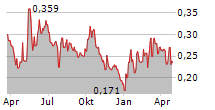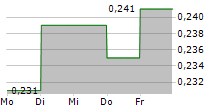Gigasun's wholly-owned subsidiary in China has signed six agreements with Chinese industrial companies for the installation of solar energy plants with a total capacity of approximately 8.4 megawatts (MW). The plants are expected to generate annual revenues of approximately SEK 3.85 million from the sale of electricity, which corresponds to a total order value of approximately SEK 77 million over the 20-year term of the agreement.
The investment in the facilities amounts to approximately SEK 32.3 million and the project is planned to commence in the fourth quarter of 2025. The plants will be owned and operated by Gigasun's subsidiaries and are expected to reduce carbon dioxide emissions by approximately 4,000 tonnes per year. The projects are fully commercially viable without the need for government subsidies.
The solar power plants will be built in Shandong, Anhui and Sichuan province.
CEO Max Metelius comments:
"Despite fierce competition and global uncertainty about the continued climate work, Gigasun continues to take new business in China. The Chinese market continues to present attractive opportunities for Gigasun to expand its presence and deliver long-term value in the global climate transition."
For more information, please contact:
Max Metelius, CEO Gigasun AB (publ)
Phone: +46 (0) 72 316 04 44
E-mail: max.metelius@gigasun.se
Stefan Salomonsson, CFO Gigasun AB (publ)
Phone: +46 (0) 70 220 80 00
E-mail: stefan.salomonsson@gigasun.se
Certified Advisor is FNCA Sweden AB
About the operation
Gigasun operates in China through its wholly owned subsidiaries Advanced Soltech Renewable Energy (Hangzhou) Co. Ltd ("ASRE") and Longrui Solar Energy (Suqian) Co. Ltd. ("SQ"), and Suqian Ruiyan New Energy Co., Ltd. ("RY").
The business model consists of financing, installing, owning and managing solar PV installations on customers' roofs in China. The customer does not pay for the solar PV installation, but instead enters an agreement to buy the electricity that the solar PV installation produces under a 20-year agreement. Current income comes from the sale of electricity to customers and governmental subsidies.
The goal is to have an installed capacity of 1,000 megawatts (MW) in the medium term.

